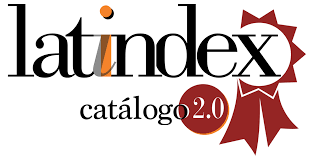Visibility of women in the communication sector. Analysis of the interviews in Dircomfidencial
DOI:
https://doi.org/10.5783/revrrpp.v12i24.790Keywords:
women, communication, gender gap, glass ceiling, visibilityAbstract
Both academic literature and industry reports agree that female talent has made a major entrance into the professional field of communication, becoming a majority in specific disciplines such as public relations. However, in the same way, the dilemma remains that this pre-eminence in quantitative terms is not maintained when it comes to the composition of the top management of organizations dedicated to communication. This situation has been confirmed in journalism (Peña-Fernández et al., 2022), advertising (Alvarado-López y Martín-García, 2020) and public relations (Topić et al., 2020), although the latter has a higher proportion of women in its workforce (Smith, 2006; Tench y Topić, 2017). As Tench (2020) accurately points out, the problem could be found in the lack of power of women professionals within their organizations. This research has set out to analyze the interviews published by the specialized communication media Dircomfidencial from January 2018 to October 2022. The research applied content analysis as a technique because it allows the quantification of the characteristics of a message (Neuendorf, 2017) and has proven its effectiveness in media products (MacNamara, 2018). The variables collected through content analysis were the date of publication of the interview, the gender of the person interviewed (male/female) and the position held. The roles were taxonomized into four categories: CEO, Country or departmental manager, Journalist and Dircom. Moreover, automatic text analysis was applied to the interviews conducted with both male and female communication directors applying the ADELEX Analyser software.
The content analysis has confirmed that in the positions of maximum responsibility most interviewees were men leaving only 28.5% of women interviewed. Worse results were obtained in the category of area or regional manager with only 13.3% of women interviewed. These data confirm, and even worsen, those obtained by the GENDERCOM (Moreno et al., 2018) report according to which there is a glass ceiling that translates into a 7 to 3 ratio between men and women in management positions in communication organizations. On the other hand, it was found that there is no time trend that would suggest an increase in the number of interviews with women. However, a relevant finding was that in the communication management position there was parity in the number of interviews between men and women, indirectly confirming data from the Topcomunicación website. In addition, it could be seen that the importance of the companies in which the communication managers performed their functions were at the same level regardless of whether they were men or women. Specifically, the female directors interviewed worked in two IBEX 35 companies, one in the French CAC 40 and one in the NIKKEI 225. In the case of the men, they were communication directors in two IBEX 35 companies and one in the CAC 40. This phenomenon would account not only for the relevant position of women professionals at the top of communication management, but also for their significant visibility. On the other hand, the automatic analysis of texts showed differences between genders with respect to the content of the interviews with communication directors. The concepts with the greatest presence in the interviews with female communication directors were related to social aspects. However, in the case of male communication directors, concepts related to the strategic management of the organizations in which they worked appeared in the majority of cases. This result, despite the limitations of the study, opens a new avenue for research into the added value that female communication directors can offer.
Downloads
References
ALDOORY, L., Y TOTH, E. (2002). Gender Discrepancies in a Gendered Profession: A Developing Theory for Public Relations. Journal of Public Relations Research 14(2), 103-126 https://doi.org/10.1207/s1532754xjprr1402_2
ALMANSA-MARTÍNEZ, A., Y FERNÁNDEZ-SOUTO, A. B. (2020). Tendencias y retos de las Relaciones Públicas en el ámbito profesional. Profesional de la Información, 29(3). https://revista.profesionaldelainformacion.com/index.php/EPI/article/view/79785
ALVARADO-LÓPEZ, M. C., Y MARTÍN-GARCÍA, N. (2020). Techos de cristal en la industria publicitaria española: profesionales femeninas tras las campañas galardonadas en los premios a la eficacia de la comunicación comercial (2002-2018). El profesional de la información, 29(3). https://doi.org/10.3145/epi.2020.may.14
CABRERA, M. C., Y MARTÍNEZ, A. A. (2016). El director de relaciones públicas en las grandes empresas españolas. Revista Internacional de Relaciones Públicas, 6(11), 113-134. https://doi.org/10.5783/rirp-11-2016-07-113-134
CHAVERO, P. (2020, 14 de octubre). La mujer en los medios: de la invisibilización a la proclama (Ponencia). En Memoria conversatorio virtual: Mujeres, Libertad de Expresión y Medios de Comunicación, 16-19. Facebook. https://www.facebook.com/ConsejoComEc/videos/791068481713162
COURTNEY, M., BREEN, M., MCGING, C., MCMENAMIN, I., O'MALLEY, E., Y RAFTER, K. (2020). Underrepresenting reality? Media coverage of women in politics and sport. Social science quarterly, 101(4), 1282-1302. https://doi.org/10.1111/ssqu.12826
DIRCOM (2022). El Estado de la Comunicación en España 21-22. Madrid: Asociación de Directivos de Comunicación (Dircom). https://www.dircom.org/wp-content/uploads/2022/05/ECE_21-22.pdf
EGIDO, A. (2017). La ley del embudo: ¿Son las agencias de publicidad un medio hostil para las mujeres?. Ipmark: Información de publicidad y marketing, 838, 70-74. https://ipmark.com/mujeres-y-publicidad-ley-embudo/
FAGOAGA, C. Y SECANELLA, P. (1984). Umbral de la presencia de las mujeres en la prensa española. Madrid: Instituto de la Mujer.
FERNÁNDEZ, Á. M., FUENTES-LARA, C., Y KHALIL, N. (2022). Brechas y oportunidades de género en la dirección de la comunicación en España. Palabra Clave, 25(3), e2535-e2535. https://doi.org/10.5294/pacla.2022.25.3.5
FITCH, K., Y THIRD, A. (2010). Working girls: Revisiting the gendering of public relations. Prism, 7(4), 1-13. https://www.prismjournal.org/uploads/1/2/5/6/125661607/v7-no4-a1.pdf
FOLMAR, J. Y BOYNTON L.A. (2005, august). Why are more women than men attracted to the field of public relations? Analyzing students’ reasons for studying PR. AEJMC conference, San Antonio, Texas, USA.
FRANQUET, R., LUZÓN FERNÁNDEZ, V., Y RAMAJO, N. (2006). Mujer y medios de comunicación on-line. Un análisis de género. En Asociación de la Prensa de Aragón, Actas de congreso Análisis y propuestas en torno al periodismo digital: VII Congreso nacional periodismo digital, 2-3 de marzo (pp. 94-108). Huesca: Asociación de la Prensa de Aragón.
FUENTES LARA, C.; MORENO, Á. & ZURRO, N. (2021). Women in Public Relations in Spain. EUPRERA Report, 3 (4). https://eprints.leedsbeckett.ac.uk/id/eprint/7873/1/WomenInPublicRelationsInSpainPV-TOPIC.pdf
GRUNIG, L., TOTH, E. Y HON, L. (2000). Feminist values in public relations. Journal of Public Relations Research, 12(1), 49–68. https://doi.org/10.1207/s1532754xjprr1201_4
GRUNIG, L. A., HON, L. C., Y TOTH, E. L. (2013). Women in public relations: How gender influences practice. Routledge.
HALL, S. (2005). Examining the manager-technician roles in public relations: is gender discrimination still an issue? A study of PR practitioners in northern England. (Dissertation thesis, Newcastle Business School, University of Northumbria).
HUTTON, J. (2005). The myth of salary discrimination in public relations. Public Relations Review, 31 (1), 73–83. https://doi.org/10.1016/j.pubrev.2004.11.007
HON, L. C. (1995). Toward a feminist theory of public relations. Journal of Public Relations Research, 7(1), 27–88. https://doi.org/10.1207/s1532754xjprr0701_03
JAÉN, M. M. (2007). Adelex analyser: propuesta de una nueva aplicación computacional para el diagnóstico de la dificultad léxica de la destreza lectora en la enseñanza del inglés. Proceedings of the 30th International AEDEAN Conference. Universidad de Huelva.
JAHANSOOZI, J. (2016). Gender and Public Relations: Critical Perspectives on Voice, Image and Identity. Journal of Communication Management, 20 (1), 91-94. https://doi.org/10.1108/JCOM-07-2015-0053
JEREMIAH, T. N. (2018). A study of gender imbalance in public relation training at Daystar University (Doctoral dissertation, Daystar University, Nairobi). http://repository.daystar.ac.ke/xmlui/handle/123456789/3280
KRIPPENDORFF, K. (2018). Content analysis: An introduction to its methodology. Thousand Oaks: Sage
LÓPEZ DEL CASTILLO WILDERBEEK, F. L. (2020). Publicidad nativa y notas de prensa, un análisis comparado. Question/Cuestión, 2(67), e433-e433. https://doi.org/10.24215/16696581e433
MACNAMARA, J. (2018). Content Analysis. En P. M. Napoli (Ed.), Mediated Communication (pp. 191-212). Berlin, Boston: De Gruyter.
MORENO, A., FUENTES LARA, C. Y KHALIL, N. (2018). Informe GENDERCOM. Brechas y oportunidades de género en la profesión de Gestión de la Comunicación en España. Madrid: Asociación de Directivos de Comunicación. https://www.dircom.org/wp-content/uploads/2021/04/Informe-Gendercom.pdf.
NARAYANA, A., Y AHAMAD, T. (2016). Role of media in accelerating women empowerment. International Journal of Advanced Education and Research, 1 (1) 17-20.
NEUENDORF, K. A. (2017). The content analysis guidebook. Thousand Oaks: Sage.
PEÑA-FERNÁNDEZ, S., LARRONDO-URETA, A., PÉREZ-DASILVA, J. Á., MESO-AYERDI, K., MENDIGUREN-GALDOSPIN, T., GANZABAL-LEARRETA, M. Y AGIRREAZKUENAGA-ONAINDIA, I. (2022). La brecha de género en la profesión periodística. Características y percepción. Área abierta, 22(2), 173-183. https://doi.org/10.5209/arab.79087
RAMOS-SERRANO, M., MIGUÉLEZ-JUAN, B., Y HERNÁNDEZ-SANTAOLALLA, V. (2022). Entre un gueto de terciopelo y un techo de cristal: situación de las creativas en España. Cuadernos. info, (53), 273-294. https://doi.org/10.7764/cdi.53.39485
REVILLA, F. (1970). Hacerlo bien y hacerlo saber: las relaciones públicas de la empresa y su formación de imagen. Barcelona: Oikos-Tau.
ROMERO QUINTERO, E. (2011). La perspectiva de género en las Relaciones Públicas empresariales: estudio comparativo de la presencia de mujeres empresarias en prensa. Revista Internacional de Relaciones Públicas, 2 (1). 221-236. https://doi.org/10.5783/rirp-2-2011-12-221-236
ROSES, S. (2011). Estructura salarial de los periodistas en España durante la crisis. Revista Latina de Comunicación Social, 66, 178-209. https://doi.org/10.4185/rlcs-66-2011-929-178-209
ROSS, K., Y PADOVANI, C. (2013). Advancing gender equality in decision-making in media organizations. Luxembourg: European Institute for Gender. https://eige.europa.eu/publications/advancing-gender-equality-decision-making-media-organisations-report
SANTORUM, S. G., Y OROSA, B. G. (2019). La presencia de la mujer en las informaciones de los cibermedios europeos de España, Italia, Gran Bretaña, Portugal y Francia. Revista Latina de Comunicación Social, (74) 403-417. https://doi.org/10.4185/rlcs-2019-1337
SMITH, G. (2006). The predominance of women in public relations (Doctoral dissertation, Central Queensland University, Australia). https://acquire.cqu.edu.au/articles/thesis/The_predominance_of_women_in_public_relations/13416683
SMITH, E. B., CHOWN, J., Y GAUGHAN, K. (2021). Better in the Shadows? Public Attention, Media Coverage, and Market Reactions to Female CEO Announcements. Sociological Science, 8, 119-149. https://doi.org/10.15195/v8.a7
SORIA-IBÁÑEZ, M. D. M. (2016). Mujeres y hombres en la prensa española: la interpretación periodística de la realidad. Feminismo-s, 27. https://doi.org/10.14198/fem.2016.27.08
TENCH, R. Y TOPIĆ, M. (2017). One Step Forward, Two Steps Back? An Analysis of Public Relations Practitioners’ Views on the Position of Women in the PR Industry (2009-2015), Current Politics and Economics of Europe, 28 (1) 83-105
TOPIĆ, M., CUNHA, M. J., REIGSTAD, A., JELEN-SANCHEZ, A., Y MORENO, Á. (2020). Women in public relations (1982–2019). Journal of Communication Management. 24 (4), 391-407. https://doi.org/10.1108/JCOM-11-2019-0143
ZAPATERO, M. D. C., Y SANTIAGO, M. J. D. (2022). El liderazgo de la mujer en la investigación en comunicación en España. Revista Española de Documentación Científica, 45(2), e324-e324. https://doi.org/10.3989/redc.2022.2.1859
ZERFASS, A., MORENO, A., TENCH, R., VERČIČ, D., Y BUHMANN, A. (2022). European Communication Monitor 2022. Exploring diversity and empathic leadership, CommTech and consulting in communications. Results of a survey in 43 countries. Brussels: EUPRERA/EACD. https://www.communicationmonitor.eu/2022/07/07/ecm-european-communication-monitor-2022/
Downloads
Published
How to Cite
Issue
Section
License
Copyright (c) 2022 Revista Internacional de Relaciones Públicas

This work is licensed under a Creative Commons Attribution-NonCommercial-NoDerivatives 4.0 International License.
Authors publishing in this journal agree to the following terms:
a. Authors retain copyright and grant the journal the right to be the first publication of the work as licensed under a Creative Commons Attribution License that allows others to share the work with an acknowledgement of authorship of the work and initial publication in this journal.
b. Authors may separately enter into additional arrangements for non-exclusive distribution of the version of the work published in the journal (e.g., placing it in an institutional repository or publishing it in a book), with an acknowledgement of initial publication in this journal.
c. Authors are allowed and encouraged to disseminate their work electronically (e.g. in institutional repositories or on their own website) before and during the submission process, as it can lead to productive exchanges, as well as earlier and higher citation of published work (see The Effect of Open Access).





